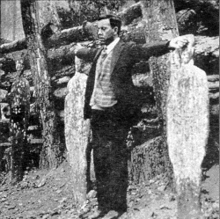As you probably know, the movie For Greater Glory is coming out, and I’m wondering about how “noble” a cause it was before I cheer on those Cristeros.I thought people were supposed to respect the government-even an anti-Catholic one-and oppose violent revolution? For example, the early Christians did not overthrow nor fight against the Romans. Why did the Cristeros? What was the Vatican’s position to them?
The Cristero uprising was preceded by non-violent demonstrations. It wasn’t until the government began killing priests, using Catholic churches as animal stables and persecuting Catholics that men stood up and began pushing back—enough so that today, Mexicans can go to Mass in Mexico.
Though the Mexican population is 95% Catholic, Mexico has been the victim of masonic governments since the independence from Spain in 1810. I would recommend you read a fascinating book
Blood Drenched Altars which explains the story of Mexico.
Realize that no freedom is free, and the freedoms you enjoy today as a Catholic are because of the bloody sacrifices of people fighting for freedom. It’s easy to be a pacifist and have others fight for your freedoms and I suppose everyone could have sat back and let tyrants like Hitler and Stalin take over the entire planet, but not so, according to the Church and the Bible. Read the battles waged by Joshua in the Old Testament; and read about the holy Crusades which waged war in defense of pilgrims who were being slaughtered and enslaved.
God choose men of action who stand up for what they believe who are afraid of shedding their blood in defense of others.I would suggest you read what the Church teaches on a just war. Furthermore, it was Jesus who lavished praise on the Roman Centurion for his strong faith. Centurions were men who commanded 100 soldiers into battle. Nowhere did Jesus condemn him for being a soldier. Furthermore, Jesus in one of His parables explains:
*“What king, about to go to make war against another king, doth not first sit down, and think whether he be able, with ten thousand, to meet him that, with twenty thousand, cometh against him?”–Luke 14:31 *
The Cristero war is a well documented even of injustice waged against people who simply wanted to practice their religion. The events depicted in the movie are merely a snapshot of what occurred between 1926-1929. Though the movie ends with a truce in 1929, the conflict broke out again after the government rounded up all the Cristero leaders and murdered them. Thus the second uprising continued through 1940. Subsequently. Plutarco Elias Calles, was arrested and exiled. But the movie does show the martyrdom of people who refused to
The conflicts is well documented in many books about the Cristiada, and plenty of photographs exist of the atrocities: i.e. military soldiers collecting Cristero heads on ropes to miles of corpses hanging from telephone posts. Here is a famous photo of Fr. Miguel Pro who was executed by the government:

Incidentally, it wasn’t until the early 1993 that the Mexican government allowed priests to wear their clerical garb in public.
The big question is this: Would you stand up and use force to defend your wife and children from an attacker?

